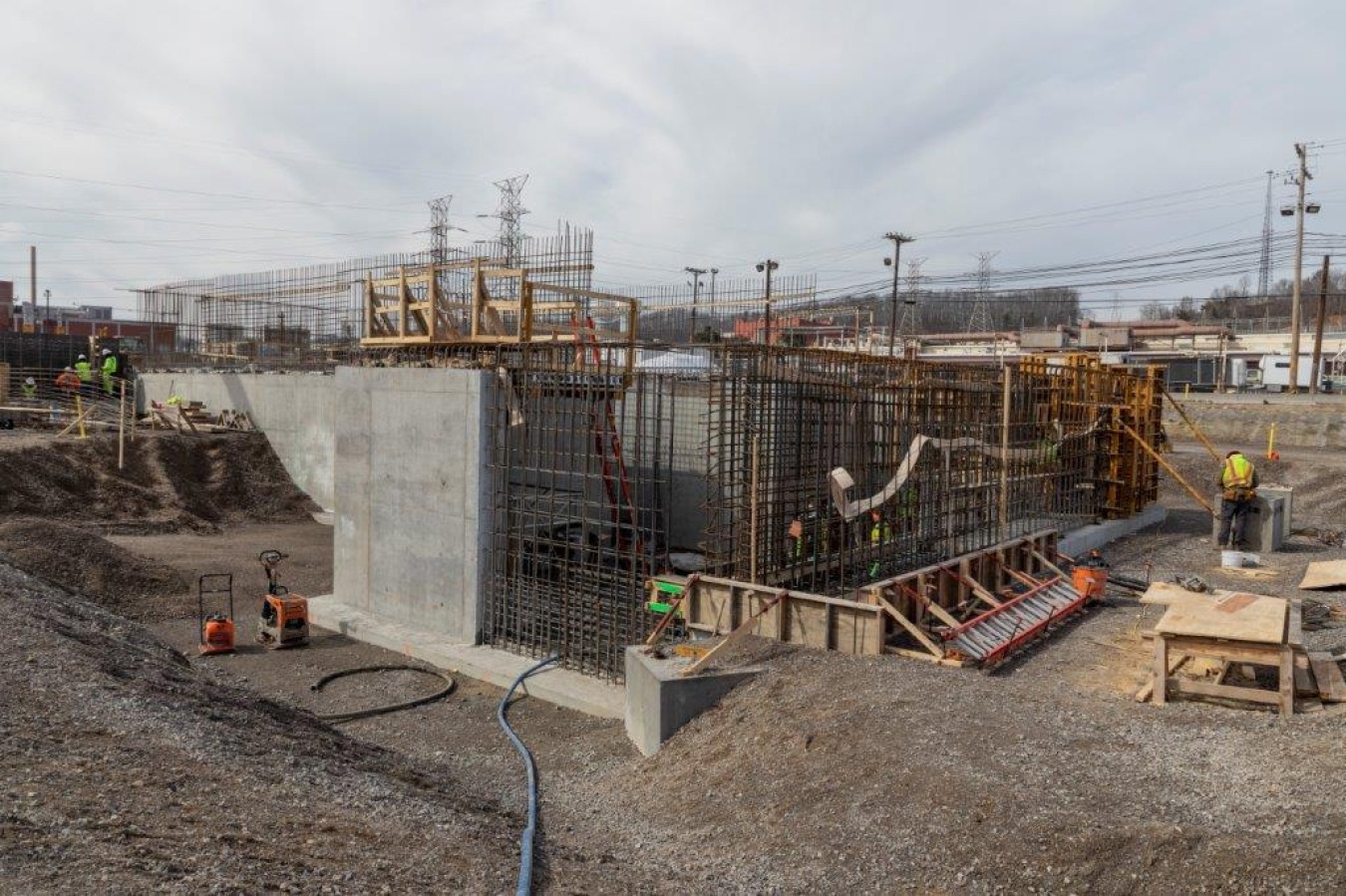OAK RIDGE, Tenn. – DOE’s Oak Ridge Office of Environmental Management (OREM) will avoid millions of dollars in costs and accelerate cleanup thanks to a project that broke ground last week at the Y-12 National Security Complex.
The West End Protected Area Reduction project (WEPAR), led by the National Nuclear Security Administration (NNSA) and Y-12 management-and-operations contractor Consolidated Nuclear Security, will reduce the size of the high-security protected area at Y-12 by approximately 50%.
The project holds numerous benefits for NNSA and EM. It supports efforts to modernize Y-12’s high-security boundary and includes the installation of new sections of a high-security perimeter system. This work will ease EM’s access to this area of Y-12, reduce the cleanup program’s costs dramatically, and allow more cleanup to advance at the site.
The new Y-12 boundary will exclude areas with vacant, deteriorating buildings identified for deactivation and demolition by EM. The fencing will continue to surround buildings used for operations that support national security missions.
The most significant sources of mercury contamination and the largest aging and deteriorated facilities currently sit behind the boundary of a Y-12 high-security protected area.
“Reducing the amount of high-security acreage will enhance access for our crews and cut cleanup costs by more than 40 percent,” OREM Manager Jay Mullis said. “These savings will allow us to dedicate more funds to accelerate the removal of deteriorated Manhattan Project and Cold War-era infrastructure and sources of mercury in the environment.”

Without the changes to the high-security boundary that will result from the project, EM cleanup in this area would be costly because it would require all workers to hold top security clearances. High costs are also associated with the work to get crews, equipment, and transportation in and out of the area.
The WEPAR project is one of the two essential efforts that pave the way for EM to begin addressing some of the most pressing cleanup needs at Y-12. The other — EM’s Mercury Treatment Facility, now under construction — will limit and control potential mercury releases as crews take down the massive Cold War buildings and address soils. The facility is designed to treat up to 3,000 gallons of water per minute and includes a 2-million-gallon storage tank to collect stormwater.
Together, the projects will allow EM to address buildings Alpha-4, Alpha-5, and Beta-4, along with the concentrated sources of mercury in the environment around them. Those buildings are categorized as high-risk excess contaminated facilities, and some were listed in a report to Congress as being “the worst of the worst.”
“Partnerships are key to EM’s success in Oak Ridge, and this groundbreaking is evidence of how our partnership with NNSA is moving forward and creating opportunities,” said Mullis. “This project is pivotal for the cleanup projects that will transform and enable modernization at Y-12, and we are looking forward to supporting that effort in the years ahead.”
The WEPAR project is scheduled for completion in 2025, the same year the Mercury Treatment Facility is scheduled to be operational.
To receive the latest news and updates about the Office of Environmental Management, submit your e-mail address.
